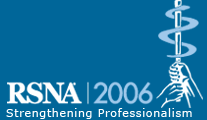
Abstract Archives of the RSNA, 2006
Peter Leonard Cooperberg MD, Presenter: Research support, R2 Technology, Inc
1) To introduce and explain to the audience some of the newer sonographic techniques that are used predominately in small parts imaging. 2) To appreciate how real-time spatial compounding can help improve the image and diagnosis by reducing noise, speckle and enhancing specular reflectors, particularly for small parts and extremity imaging. 3) To demonstrate how extended field-of-view imaging can help small parts imaging by showing the relationship of abnormalities to the normally recognized structures.
This course is divided into 4 parts:
Harmonic Imaging -- Peter Burns, PhD
Harmonic Imaging with filtering out the lower frequencies was developed to clean up the clutter (noise) during microbubble contrast enhanced ultrasound. This worked well. Surprisingly the same and similar noise reducing techniques work even without bubbles --i.e. Tissue Harmonic Imaging.
3-D/4-D Ultrasound Imaging – Peter Cooperberg, MD
Techniques to produce three dimensional volumes of ultrasound data have been around for several years. It is only recently that faster computer technology has allowed these volumes to be displayed and interrogated in clinically useful ways. In Obstetrics, Volume and Surface Rendering with Shaded Surface Displays allow a more meaningful visualization of fetal abnormalities. Multi-planar reformatting can allow visualization of the “C-plane”. And now techniques are being developed to allow radiologists to sit at a workstation, after the patient has left, and interrogate the volume in appropriate planes analogous to CT or MR.
Elastography – Jonathan Rubin MD
Elastography is new technique that utilizes ultrasound to evaluate the stiffness of lesions detected by standard sonography, predominantly in the breast. It is also used to differentiate fresh from old DVT.
Image Fusion –Luigi Solbiati MD
Image fusion can help in lesion ablation by showing the real-time ultrasound imaging, side by side, or superimposed with the equivalent plane of a data set from a previously performed CT scan.
All of the above new technologies will be explained, illustrated and the benefits and limitations discussed..
Cooperberg, P,
Spatial Compounding and Other Noise-reducing Techniques. Radiological Society of North America 2006 Scientific Assembly and Annual Meeting, November 26 - December 1, 2006 ,Chicago IL.
http://archive.rsna.org/2006/4402464.html

